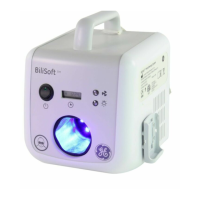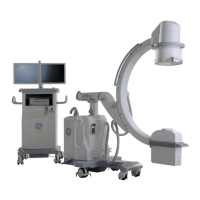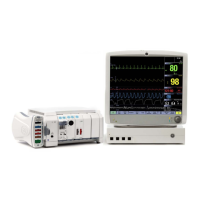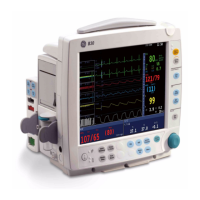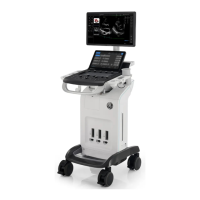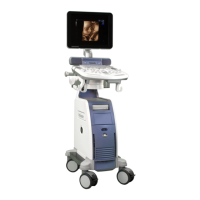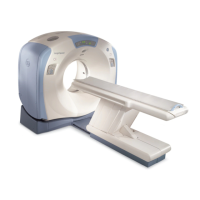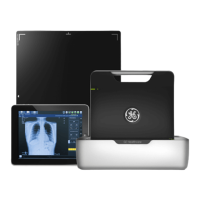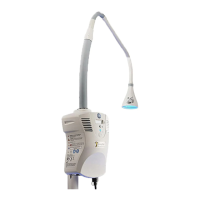121
Troubleshooting
NOTE: Always check the patient’s condition first in problematic situations or if an alarm is triggered. See also “Messages.” Also note that if the
measurement or function does not appear on the screen, check module connections.
Airway gases
Values are too low:
• Check the sampling line and connectors for leakage.
• Check the patient status.
Values are too high:
• Check the sampling line for blockage.
• Check the patient status.
Module does not work:
• Check and clean the filter if necessary.
• Check the water trap. If it was too full, liquid may have
entered the module. Replace the module and have it
checked by authorized service personnel.
No airway gas values:
• Check that the gas sampling line is connected to the water
trap.
Arrhythmia
Extra arrhythmias are detected.
• Start relearning manually through
ECG - Relearn.
Extra Ventricular Fibrillations are detected:
• Check the patient.
• Check that the amplitude signals are sufficient:
Leads I and II: Select the one with the largest amplitude to
ECG 1.
After selecting the leads, start relearning manually.
Batteries
Battery operation time is markedly shortened:
• Condition the batteries, see “Conditioning the batteries” and
the “User's Reference Manual.”
ECG
ECG signal is noisy or no QRS is detected:
• Ensure that the patient is not shivering.
• Select the correct ECG filter through ECG - ECG Setup -
Filter.
• Check the electrode quality and positioning. Do not place
them on body hair, bones close to skin, layers of fat and
major muscles. Pre-gelled electrodes are recommended.
• Change the ECG lead.
• Remove the ECG cable from the module and reinsert it.
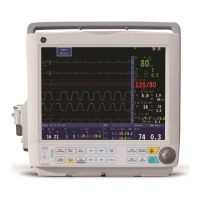
